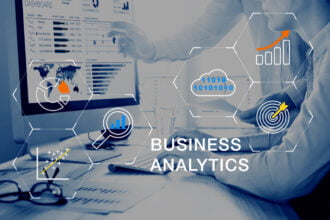There is no disputing that data analytics is a huge gamechanger for companies all over the world. Global businesses are projected to spend over $684 billion on big data by 2030.
There are many ways that companies are using big data to boost their profitability. One of the most important is in the field of marketing.
Do you know what motivates your customers? This may appear to be a simple question, but every company knows it isn’t. Before making a purchase, clients conduct thorough online research and call the business’s virtual phone address. Therefore, you need sophisticated customer analytics to analyze complex customer behavior.
This article will go over the concept of customer service analytics and some of the uses and advantages it could provide to a business.
What Is Customer Service Analytics?
Customer service analytics is a process that involves gathering and evaluating all data and metrics produced by a company’s or organization’s customer care department. Messages, transactions, survey comments, returns, and demographics are all data sources in a customer relationship. Companies frequently use analytical tools to gather customer data from across the organization and provide important insights. Marketing, product development, and customer experience should all benefit from these discoveries.
This technology is growing in importance. Market analysts project that companies around the world will spend over $47 billion on customer journey analytics by 2030. This amounts to around 8% of the entire future big data market!
Using solutions driven by artificial intelligence (AI), businesses can gain new insights and improve client experiences. Predicting client behavior is also possible based on previous behavior. As a result, your customer support representatives will be more prepared to help them in the future.
Customer Service Analytics: Use Cases
Customer service analytics is necessary for businesses that want to assess the level of help provided to customers and other key stakeholders. The information you gather will assist you in identifying strategies that are effective and pinpointing areas where you can improve. There are a lot of great benefits of using big data in customer service. Some of the most important customer service analytics use cases are listed below.
Detecting Customer Dissatisfaction
Content from social media and other publicly accessible websites can be mined for useful information. Consumer attitudes or opinions regarding specific products, services, or customer communication channels are examples of such content. If negative sentiments are discovered, you can adjust your branding or email marketing campaigns to make your product more appealing to buyers.
Identifying the Next Best Offer
You can determine which items or offers people are most likely to be interested in during their next purchase by looking at their transaction history, trends, and conversations. The information you gather assists you in determining what your consumers require at the right time. Customers’ changing shopping habits can help companies target them with special product promotions.
Analyzing the Reasons of Customer Churn
Data analytics can assist you in figuring out why people abandon your brand or prefer alternative products instead. Predictive analytics, which analyses historical activities to uncover trends and forecast a specific event, can also predict if a customer is ready to churn or defect. The drop in consumer involvement or interest is crucial for approaching churn.
To reduce customer churn, you must first evaluate the fundamental reason for the problem and whether or not your product is losing its appeal to certain of your customers. For example, a company with a high turnover rate can boost customer satisfaction by creating customized offers for each customer category.
Performance Evaluation
Customer service analytics assist you in tracking and comparing key performance indicators (KPIs) to service level agreements (SLAs). You can see which representatives are meeting their targets and which ones need to boost their statistics this way. You may also reward top achievers and encourage your staff to perform better.
Finding New Revenue Sources
Every business’s profitability will be impacted by constantly changing market dynamics and rising customer service costs. You can, however, use your existing data to find new cash streams for your company. Data about your buyers’ preferences can help you come up with new service alternatives to provide as add-ons to your existing products. You can also recommend a new product that will go well with the customer’s most recent purchase.
Types of Customer Service Analytics
Below are the different types of customer service analytics and why they matter to your business.
1. Customer Experience Analytics
Customer experience analytics can help you make more money. CX analytics is a type of descriptive analytics in which “what happened” during the customer journey is asked. These are the “standard” types of customer analytics: they summarize raw data into something easy to comprehend and explain.
Key performance indicators such as Customer Satisfaction (CSAT), First Response Time (FRT), and Total Time to Resolution (TTR) can be extracted and interpreted from support data to help improve current workflows.
With descriptive customer experience data, service managers may see trends, such as an increase in tickets around new product launches or during the Holiday period and use this information to improve their service. These insights can develop strategies for when the events occur again.
2. Customer Journey Analytics
It’s critical to have a bird’s-eye view of your customer’s journey if you want to provide a superior customer experience. This means having exposure to things like abandoned shopping carts and returns and understanding your customer’s purchase history and buying habits. It contains customer service interactions, emails opened, and customer satisfaction scores.
It also allows you to see relevant comments left on social media platforms. When all of this data is available to your company, you can gain invaluable insights into adjusting your strategy and increasing earnings.
Predictive customer journey analytics can assist managers in determining which patterns are currently driving success, allowing them to replicate, iterate, and optimize their efforts. Customer data like this can help fill in data gaps that customer experience analytics might overlook.
3. Customer Retention Analytics
Customer retention is influenced by customer loyalty, and there is a definite correlation between loyalty, retention, and minimal customer effort. Customer effort, often known as a Customer Effort Score, describes how much effort a customer puts during support interactions. A high level of customer effort results in a poor customer experience. When customers have negative experiences, they become less loyal to your brand and are more likely to shop elsewhere.
Customer retention analytics will aid your company in improving marketing as well as overall product and support. Prescriptive customer retention analytics may help you upsell and cross-sell to existing customers because keeping customers is significantly easier and more profitable than acquiring new ones.
In addition to the Customer Effort Score (CES), Customer Churn Rate (CCR) is another helpful customer retention indicator in which customers lost are divided by customers from the beginning. Customer Lifetime Value (CLV) forecasts a customer’s worth in relation to other metrics. In contrast, Loyal Customer Rate (LCR) indicates which customers are most likely to stay around and refer your brand or product to others.
4. Customer Engagement Analytics
Knowing customer experience includes a large component called engagement. All conversations between a brand and its customers through various communication channels are called customer engagement. This could include social media interactions, customer service channels, or survey data.
Customers want companies to incorporate their feedback into new products and services. Today, the greatest approach to assess customer engagement is through software that incorporates data from all of your client touchpoints – from conversion rates and customer sales, pages per session, customer interactions, and session duration.
5. Customer Lifetime Analytics
In a broader sense, customer lifetime overlaps with the customer journey and the customer experience. However, the Customer Lifetime Value is an essential additional metric in this type of analytics. It shows you how much money you may expect from a single customer throughout their relationship with your brand.
Conclusion
Businesses can use customer service analytics to gain meaningful information into the performance of their customer service representatives and the needs of their customers. It increases brand exposure, sales, revenue, and customer satisfaction. For great customer analytics, use software that already integrates support data from all channels and touchpoints, so you don’t have to dig for it manually.










